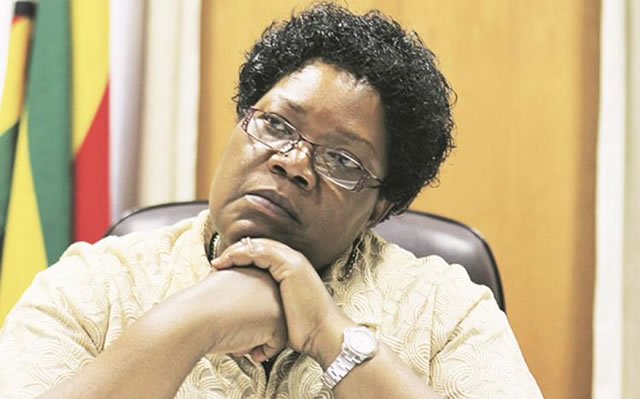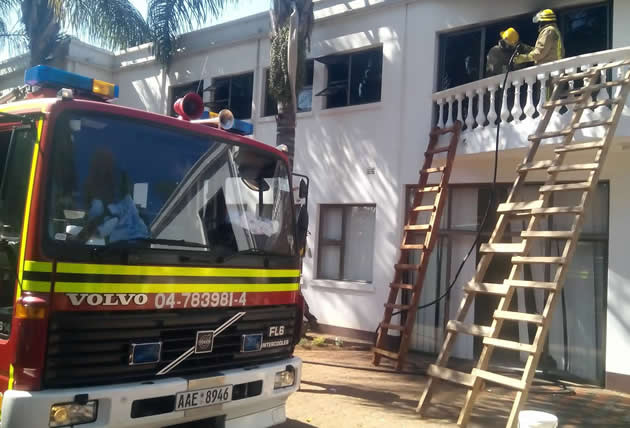Rhodie guns down 9


Dylann Roof, as he appears of his Facebook profile, proudly donning the flags of apartheid South Africa (top) and Rhodesia (bottom). The Rhodie gunned down nine black Americans in a church in Charleston, South Carolina on Wednesday
THE man accused of shooting dead nine people on Wednesday night at a historic African-American church in Charleston, South Carolina, proudly donned a jacket emblazoned with the flags of Rhodesia and apartheid South Africa.
The man, Dylann Roof (21), of Lexington, South Carolina, was arrested yesterday morning about 395 kilometres away in Shelby, North Carolina, law enforcement authorities said.
He was taken into custody without incident at about 11:15am (17:15pm Zimbabwe time) during a traffic stop.
Charleston police Chief Greg Mullen yesterday said local police were acting on a BOLO (be-on-the-lookout) notice that included a vehicle description, the licence tag and the suspect’s name.
Roof was armed with a gun when he was arrested, according to a law enforcement official briefed on the investigation. It’s not clear if it’s the same firearm he allegedly used in the shooting.
A senior law enforcement source told CNN the suspect’s father had recently bought him a .45-calibre gun for his 21st birthday.
US analyst Zack Beauchamp said Dylann Roof was, in all likelihood, a white supremacist.
“We know that not just from his actions: the photo of Roof shows him wearing a jacket with the flags of two former avowedly racist nations, apartheid South Africa and Rhodesia.
‘’Here’s a guide to what those flags mean – and why a man who appears to have committed a vicious hate crime would sport them on his jacket.
‘’Rhodesia’s flag: Rhodesia is now Zimbabwe. It was a terribly racist country, akin to apartheid South Africa, and became a sort of cause celebre for white supremacists in the 1960s and 1970s – one they still mythologise today.
‘’After the area was colonised by the British in the late 1890s, a racial caste system quickly emerged in what would become Rhodesia, where white people controlled the commanding political heights, as well as most of the land, while black people served as peasants. In 1965, white natives led by Ian Smith a unilateral declaration of independence from Britain, and founded a country named Rhodesia, named after Cecil Rhodes (the British imperialist who led the colonisation of the area).
‘‘In the United States, where the civil rights movement was winning historic victories, white supremacists saw the viciously racist Rhodesian government as a victory worth celebrating. By 1976, “there was a sprawling proliferation of pro-Rhodesian organisations in the United States.”
Indeed Rhodesians claim to have embassies worldwide where they hold celebrations to mark milestones in Rhodesia’s history. Former Zimbabwe amabassador to Australia, Jacqueline Zwambila – who was an MDC-T appointee during the inclusive Government – embarrassed the nation when she attended one such event in Australia.
UNC-Chapel Hill historian Gerald Horne writes; “The transatlantic question of race was the essential glue that held the lobby together.”
In 1979, the Rhodesian government was toppled by an armed uprising – no surprise, considering black people outnumbered their white counterparts by about 25:1 (the equivalent number in South Africa was 7:1).
‘’That is why people like Roof mythologise Rhodesia today: they see it (falsely, of course) as proof that countries are better off when white people run them. Earlier this year, about 150 people on a white supremacist web forum volunteered online to “found” a “new country” in Africa. They called it, naturally, “New Rhodesia.”
The lesson of Rhodesia, white supremacists supremacists say, is that black people are a threat to a healthy white-run society. And they need to be kept down.
US president Barack Obama, who ironically extended his country’s sanctions regime on Zimbabwe for daring to correct Rhodesian injustices, mourned the violence and the victims, saying, “Any death of this sort is a tragedy. Any shooting involving multiple victims is a tragedy. There is something particularly heartbreaking about death happening in a place in which we seek solace, we seek peace.”
The slayings took place inside the historic Emanuel African Methodist Episcopal Church, near the heart of Charleston’s tourist district. The man spent an hour in a prayer meeting before he opened fire, Mullen said.
A law enforcement official said witnesses told them the gunman stood up and said he was there “to shoot black people.”
Police were searching for information about Roof.
He was charged earlier this year on a trespassing charge in Lexington County, South Carolina. According to an arrest warrant, Roof was approached by police after a store complained about him.
After a search, police found an unlabeled pill bottle with “multiple orange in color strips” believed to be suboxone, a drug used to relieve painkiller addiction. Roof told police that a friend gave him the drugs.
Authorities are investigating whether Roof (whose last name rhymes with “cough”) had links to hate groups.
A picture of him on social media showed him wearing a jacket with what appears to be the flags of apartheid-era South Africa and nearby Rhodesia, a former British colony that was ruled by a white minority until it became independent in 1980 and changed its name to Zimbabwe.
Six females and three males were killed in the church, Mullen said. Among the victims was the church’s pastor, the Rev. Clementa Pinckney who was also a state senator and one of the black community’s spokesmen after the slaying of an unarmed man by a North Charleston police officer this year.
Three people survived, including a woman who received a chilling message from the shooter.
“Her life was spared, and (she was) told, ‘I’m not going to kill you, I’m going to spare you, so you can tell them what happened,’” Charleston NAACP President Dot Scott told CNN. She said she heard this from the victims’ family members.
Federal authorities have opened a hate crime investigation into the shooting at the oldest AME church in the South, the Department of Justice said.
“The only reason someone would walk into a church and shoot people that were praying is hate,” Charleston Mayor Joe Riley said.
There were 13 people inside the church when the shooting happened — the shooter, the nine people who were killed and three survivors, South Carolina state Sen. Larry Grooms, who was briefed by law enforcement, told CNN. Two of the survivors were not harmed, he said.
It was not clear if the man targeted any individual.
“We don’t know if anybody was targeted other than the church itself,” Mullen said.
Emanuel African Methodist Episcopal Church has been a presence in Charleston since 1816, when African-American members of Charleston’s Methodist Episcopal Church formed their own congregation after a dispute over burial grounds. Known as “Mother Emanuel,” it’s been the headquarters for civil rights activity over the decades.
It was burned to the ground at one point but was rebuilt. Throughout its history, it overcame obstacle after obstacle — destroyed by an earthquake, banned by the state. But its church members persevered, making it the largest African-American church in terms of seating space in Charleston today.
Authorities said they were shocked not only by the killings but that the violence occurred in a house of worship.
“People in prayer Wednesday evening. A ritual, a coming together, praying, worshiping God. An awful person to come in and shoot them is inexplicable,” Mayor Riley said. – CNN-HR











Comments